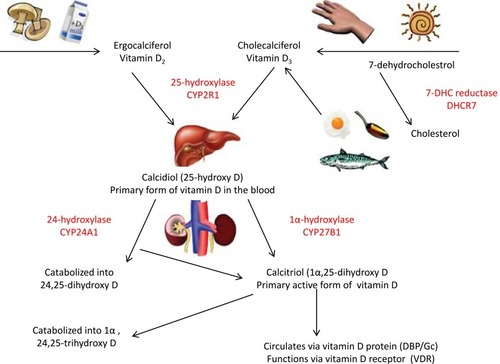Figures & data
Figure 2 Role of vitamin D for the production of cathelicidin. Mycobacterium tuberculosis-derived macrophages with TLR2/1L stimulate the expression of VDR that connects to Vit-D and inhibits Mtb through inducing innate immune responses that produce cathelicidin.

Table 1 Sputum Conversions By Vit-D And Placebo Administration.
Figure 3 The role of autophagy and CAMP in 1,25D3-mediated inhibition of Mycobacterium tuberculosis (Mtb) and HIV. HIV budding occurs into the multivesicular endosomes of macrophages. Mtb enters through phagocytosis. Cytochrome p450, family 27, subfamily B, polypeptide 1 (CYP27B1) 1α-hydroxyls the inactive 25D3 into the active 1,25D3. 1,25D3 induces the expression of camp, presumably by binding to the Vit-D (1,25D3) receptor (VDR), which heterodimerizes with the retinoid X receptor (RXR) and directly regulates transcription by binding to the vitamin D response element (VDRE) consensus sequence located upstream of the Camp gene. The expression of camp is required both for autophagosome and phagolysosome biogenesis, which leads to killing of the microbial pathogens through autophagy. Adapted from Jo EK. Innate immunity to mycobacteria: vitamin D and autophagy. Cell Microbiol. 2010;12(8):1026-1035. © 2010 Blackwell Publishing Ltd.Citation39


